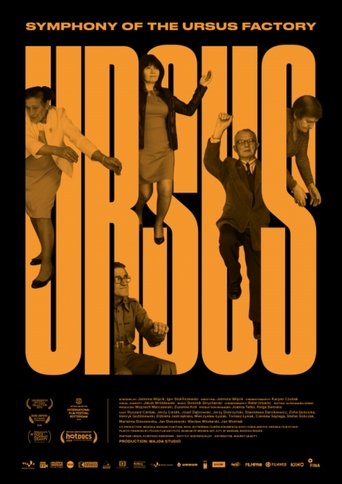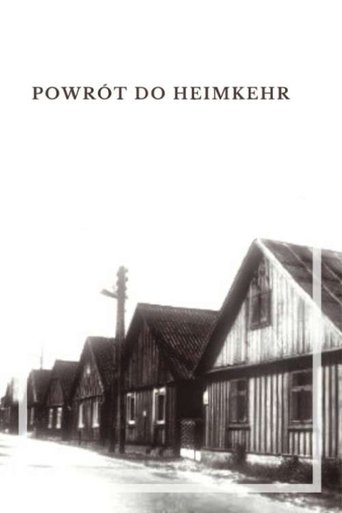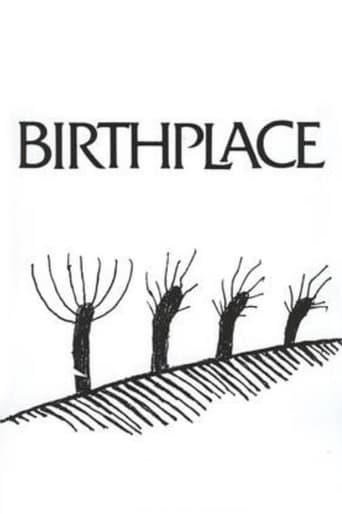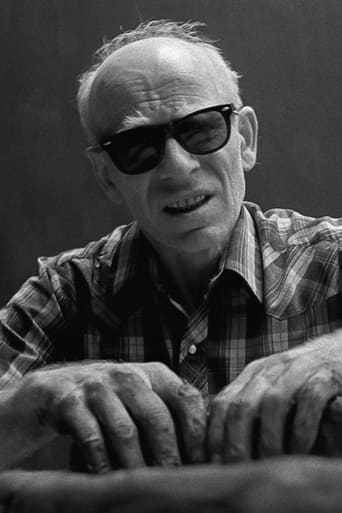Studio Filmowe Kronika
Tonia i jej dzieci 2011
Symphony of the Ursus Factory 2019
The Ursus factory once covered 170 hectares and employed 20,000 workers, producing 100 tractors a day. Now, its buildings stand derelict and empty; half have already been demolished by investors with new plans. The symphony of mechanical sounds and gestures that is gradually built up throughout the film is produced by former factory employees. Proud of their factory, they reminisce about the huge numbers of people and the parties they had. They were a community, passionate about supporting agriculture through their factory. The Ursus tractor was well-known, not only in Poland but throughout the world.
The Happy Life of Benedykt Jerzy Dorys 1990
Made just before the protagonist's death, Maria Kwiatkowska's film is a documentary portrait of one of the most outstanding Polish fashion and portrait photographers, Benedykt Jerzy Dorys. The co-founder of the Union of Polish Art Photographers talks about his artistic path and his personal life.
Pokolenia 2017
The history of Poland told through fragments of movies produced by Wytwórnia Filmów Fabularnych.
The Choice of Poland 1991
A documentary about the election campaign and the first free elections in Poland in 1990. The filmmakers look behind the scenes of the political game. They present candidates during meetings with voters, document meetings of election staffs and listen to the ‘voice of the street’.
The Prison Guard 1990
The protagonist of the film "Klawisz" is Jan Doliński, a former guard of the Lublin Castle prison, who held his post during the German occupation and remained in it almost until the prison was liquidated in 1954. He was dismissed because he did not want to join the Polish United Workers' Party.
Powrót do Heimkehr 2012
Birthplace 1992
Henryk Greenberg is a Polish-born American who lost much of his family in the Holocaust. Certain of the location where his father and younger brother were murdered, Greenberg returns to find most of his former neighbors predictably claiming foggy memories at first; but soon their recollections come more easily.
Silence, Darkness 1999
The film was made at the Polish Sculpture Center in Oransko, during sculpture workshops for deaf-blind people. The camera shows the process of creation, which is closely connected with getting to know oneself. It is accompanied by hesitation, anger and joy.
Siberian Lesson 2003
The first documentary by Wojciech Staroń. He just finished film school, his wife Małgosia just became a teacher. The year is 1997. They decide to go for a year deep into Siberia: she’ll teach Polish, he’ll shoot a film. And this is that beautiful film, narrated in the first person by Małgosia as she meets all sorts of colorful characters and reflects upon reality with her beautiful, monotone voice, seeing the good in people individually and collectively. This is also about her transformation in this travel undertaken in the centuries-old fashion of the observer who, by observing others, observes herself.
Powrót do Heimkehr 2012
Voices From Afar 1992
A documentary record of memories of Poles exiled to Kazakhstan. The description of harsh living conditions, terror, hunger and overwork is illustrated with archive photographs and contemporary shots of Kazakh wilderness and towns, where traces of the past regime are still visible.
Dziennik pisany pod wulkanem 1995
A kind of film essay on the life and work of Gustav Herling-Grudzinski. The writer's story about his life is interspersed with documentary footage shot in Naples, where he has lived for thirty years (hence the title), and in Warsaw, during a visit to Poland in 1994.
Thou Shalt Not Kill 1991
Józef Gębski's film is a documentary reconstruction of the crime committed by NKVD officers against Polish officers imprisoned in Starobielsk and Kharkov in 1940. Accounts of historians and prosecutors are juxtaposed with the testimony of the then heads of the central and regional NKVD board.
Gadające głowy II 2004
In 1980, Krzysztof Kieslowski asked hundreds of people the same three questions: what year were you born? who are you? what would you like/what is important to you? From the recorded statements, he eventually selected 44 people and ranked them chronologically, guided by the age of the interviewees: from the youngest to the oldest so that there was one person's statement for each vintage. A gallery of talking heads: from kindergarten children, through schoolchildren, students, engineers, electricians, nurses, priests, writers, sociologists, cab drivers, to pensioners even a hundred years old, made up a collective portrait of a Pole - a keen observer of reality, aware of his identity and the place where he lives, eager for change. A quarter of a century later, Krzysztof Wierzbicki repeated that idea here.
The Smoke Only 1990
A documentary tackling the problem of air pollution in Walbrzych. The film shows the effects of excessive and ill-considered industrialization of the region: the sky covered with smoke, mining waste heaps piling up, burnt buildings, and, above all, the residents exposed to smog from an early age.
In the Shadow of the Palace 1991
Russians working at the bazaar near the Palace of Culture and Science in Warsaw talk about their everyday life.
W służbie orła białego 1994
The film tells the story of pilots, American volunteers who fought in the Polish-Bolshevik war.
Beyond the Horizon 1991
About Catholics exiled to Kazakhstan from Germany, Poland, and Ukraine during Soviet times.









